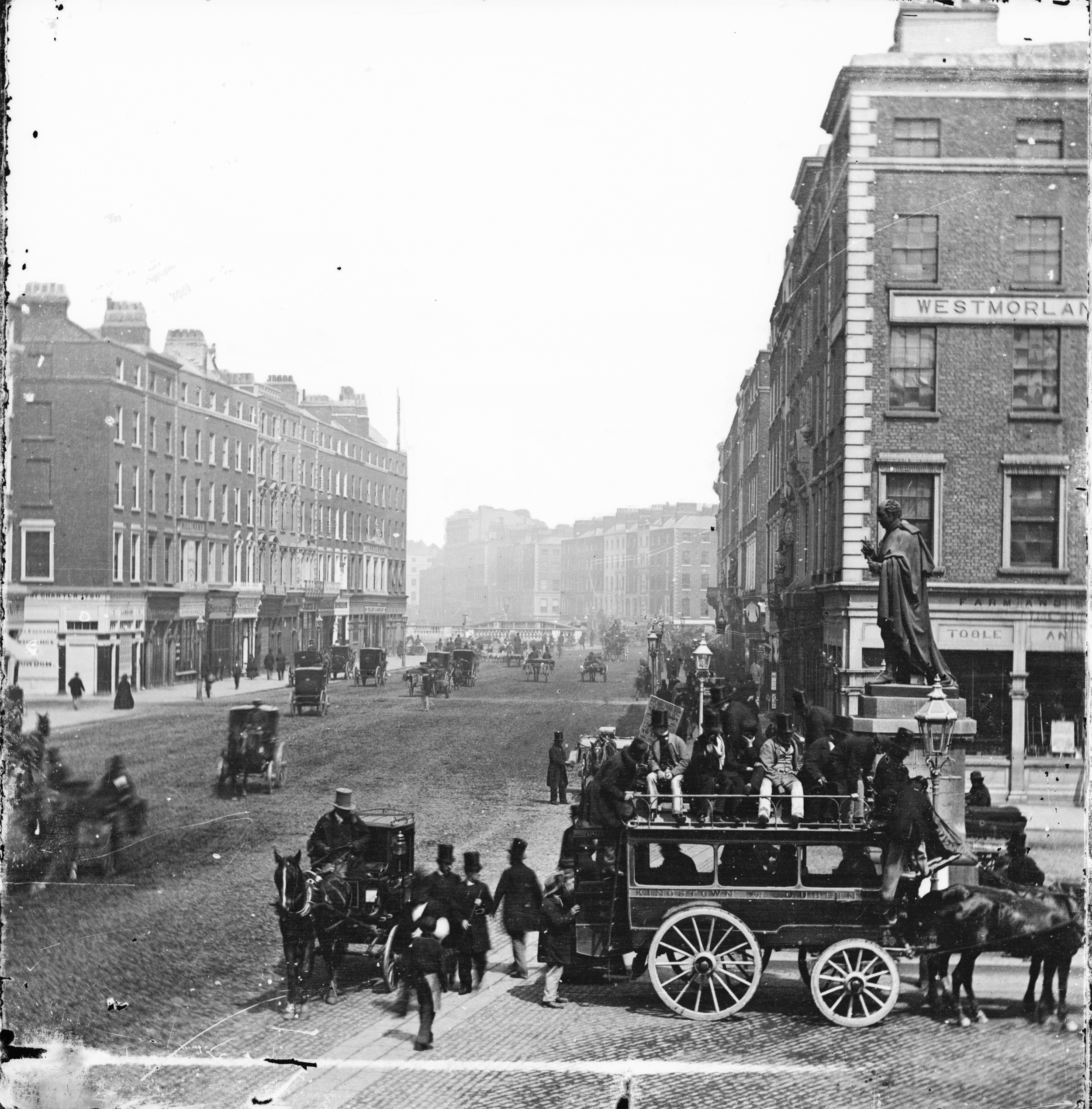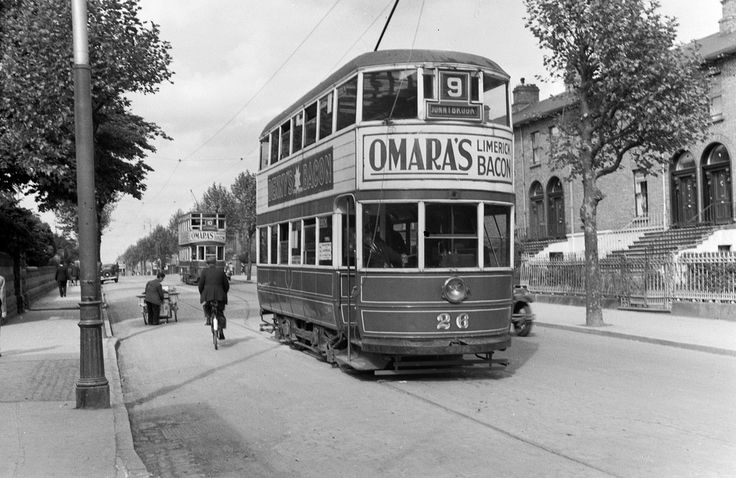The story of transport in Ireland
Traditionally people moved by foot or on horseback in Ireland with rivers and seas supporting the movement of people and goods over long distances. In the 1800s, public transport expanded in the form of stage coaches, canal barges, and commuter railways. This was gradually replaced by private and public motor transport in the 1900s to the point where almost 2 million cars were registered in Ireland in 2014. The evolution of transport infrastructure is ongoing. With the completion of a national motorway system the emphasis has shifted to the provision of local infrastructure to manage congestion and air quality. EU energy policy has driven higher obligations on manufacturers to meet increasing emissions standards and set a 10% target for renewable transport by 2020. Renewable options being pursued include electric vehicles and motorbikes, biofuels, compressed natural gas (CGN), and biogas, as well as initiatives to transition towards alternative approaches to travelling, such as through the cycle to work scheme and city bikes.
Transport in modern Ireland is the means by which we provide for the movement of people, goods and services. It is also a service in its own right; a private or public service, an individual or a shared service and the technology involved ranges from none at all through the simple bicycle to jet plane. Until the 19th Century most land journeys were by foot or on horseback with rivers and seas supporting the movement of people and goods by river barge or ship over long distances.
Early transport services facilitated the collective movements of people by coach, in boats on inland waterways or on larger ships sailing to foreign lands. Eventually even greater volumes of collective passenger and goods transportation was made possible by the creation of canals, the invention of railways, trams, buses, and private cars. Goods were moved on canals, or railways, in sea going ships and, with the advent of the internal combustion engine, goods transport by truck and smaller commercial vehicles became the norm in Ireland.
The energy to power in the different modes of transport came from wind (sailing ships), humans (walking, rowing, pedal-power), horsepower (pulling canal barges, coaches, and trams), wood, coal, diesel and electricity (as energy for railway locomotives), and petrol, diesel, LPG and renewable biofuels in internal combustion engines in cars and lorries. Modern ships run on marine diesel. In the future they may be required to use cleaner fuels such as LNG (liquefied natural gas) in response to concerns of air pollution from ships visiting certain ports in Europe and USA. A large proportion of sea transportation of goods is now by container shipping.
After Roman roads and the transport of essentials like water in aqueducts ships and ports were the first elements of transport infrastructure; the need to trade local produce via rivers, then canals, railways, roads and eventually air caused successive waves of infrastructure investment that continues today with the proposed new runway for Dublin airport.
The mobility over longer distances was firstly undertaken by merchants and traders, then administrators. At the time of the Roman Empire the need for sea transport grew rapidly to provide the logistical support to conquer and then control remote lands. The many ships and crews were initially sourced by Rome from Greece and Egypt.
Technical developments placed a range of new transport options using horsepower (literally), ships powered by wind, human rowers and eventually coal fired steam ships. Developments such as the railways allowed the wealthy initially and then the general populace to travel including for leisure activities. This led to the growth of seaside resort towns connected by rail to urban centres. The possibility of holidaying and commuting for work was facilitated by those early infrastructure investments.
An early form of zero carbon transport came on stream with the invention of the bicycle. By the turn of the 20th century these were expensive and were limited to those who could afford them. They were more competitive over short distances than the horse drawn, steam or emerging internal combustion options (the bicycle was invented 1817, patented in 1860 and 1870, first popular models were placed on the market in 1895).
Today it is possible to source goods or travel to places that at one time would have consumed so much time and resources that they remained out of reach for all but the most adventurous of travellers. Ireland like most of the world lived off locally produced food and resources where the most valuable were traded to secure rare essentials like sugar, salt, spices and textiles. The mobility of people, passengers, goods and services we enjoy today is facilitated by a combination of technology, energy and infrastructure developments. The great projects of the last two centuries have involved the construction of canals, railways, tramways in towns as well as ports and airports alongside the modernisation and extension of the road system.
The rise of aviation as a means of passenger transport, both within Ireland and internationally, was also inexorable. In 1949 there were 213,000 passengers. Dublin Airport expects to handle 27 million passengers in 2016. Ryanair carried over 100 million passengers for the first time in 2015. In 2014 there were 1.95 million private cars in Ireland travelling on average 16,131 kms per car.
The evolution of new transport modes is ongoing. The use of biofuels to reduce the CO2 impact of combustion engines is now established. Research is ongoing into electric vehicles (EVs) including the non-plug technology for charging them. Electric assisted bicycles are now available as are electric motor bikes. The potential future use of renewable gas from anaerobic digestion (e.g. of grasses and other biomass) is being researched in Ireland. This is examining the feasibility and economics of distributing cleaned methane gas through the existing natural gas transmission system to fuel internal combustion engines in towns and cities on the grid. Research into driver-less vehicles is proceeding apace with one manufacturer planning to market them within 4 years. One of the biggest revolutions in energy use in urban transport may be brought about, not by climate change, but by health concerns from vehicle exhaust pollution of particulates and NOx from internal combustion engines in large cities such as London and Paris where citizens have resorted to litigation in protest.
The great hope of working from home as a means of reducing the need for work related transport has yet to be realised on a scale that would reduce peak travel, possibly due to the need for social interaction which the work environment provides.


